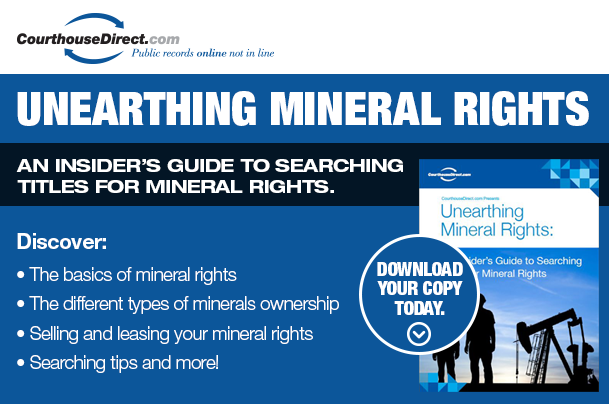Most property owners are aware of the basic concept of eminent domain. As a well-known legal framework with deep historical roots, eminent domain has provided governments with adequate grounds to appropriate and improve specific parcels of land for a variety of reasons. Recently, several factors have conspired to broaden the interpretation of this framework. Private companies and local or state governments routinely form de facto partnerships for the purposes of exercising eminent domain more efficiently. Landowners who retain the mineral rights to their parcels have an added incentive to understand and anticipate eminent domain issues.
The Basics of Eminent Domain
Eminent domain is a legal concept that permits government entities to appropriate private land for the purposes of making infrastructure improvements or fostering economic development within a given district or area. Although it's most often used to seize property that stands in the right-of-way of a planned road, pipeline, power line or other infrastructure element, eminent domain can also be used in more controversial situations. A 2005 Supreme Court decision provided the basis for the use of eminent domain as a tool to revitalize blighted neighborhoods and spur large-scale construction projects that purport to have tangible economic benefits.
Even more recently, eminent domain has been used to expedite the allocation of drilling rights-of-way for mineral extraction firms. Such "compulsory integration" guidelines have obvious implications for landowners who retain the mineral rights to the seized parcels.
Extraction Companies and State Governments: A Profitable Partnership
On a state-by-state basis, broad interpretations of eminent domain have created opportunities for mineral extraction companies that wish to gain access to oil and gas deposits. In some jurisdictions, these companies may use state-issued environmental regulations to appropriate land within the catchment basin of a planned or extant well. Although such seizures are ostensibly designed to reduce the likelihood of groundwater pollution on parcels that remain in the hands of third parties, they effectively compel landowners who live on or near mineral deposits to forfeit their land for the benefit of a private firm. Although such laws are routinely challenged in court, landowners must assume that they're ironclad. Anyone who faces a driller-led appropriation should take steps to protect the mineral interests in their land.
Factoring Mineral Rights into Eminent Domain Calculations
Since "compulsory integration" always concerns subterranean mineral wealth, the process usually makes some provision for mineral-related compensation. However, landowners must ensure that such compensation properly accounts for the current and potential production of the parcels in question. Meanwhile, landowners who face eminent domain seizures for other reasons may be even more vulnerable to "cheating." Property owners who find themselves compelled to give up post-production parcels may also be at risk: Since their land has been "tapped out" or deemed unfit for further development, they might not fight to secure compensation for the applicable mineral rights. This is unfortunate: Ongoing improvements in exploration and drilling technology have been known to make it feasible to exploit long-dormant oil and gas deposits.
Legal Recourse
Eminent domain is a broad, complicated framework. As such, involuntary seizures of private land tend to fall along a broad spectrum. Every year, thousands of transactions that concern mineral-bearing parcels occur in a fair, transparent manner. Others completely disregard the landowner's valid claim to his or her mineral rights. Many fall in between these two extremes. Fortunately, landowners are free to negotiate with mineral extraction companies to arrive at a fair value for their mineral rights. Depending on existing legal precedents, it may also be possible to sue the environmental agencies that partner with mineral extraction firms to execute eminent domain orders.
Final Thoughts: Mineral Rights are Always Worth the Fight
Landowners shouldn't automatically view eminent domain as a tool by which governments and mineral extraction companies cheat private citizens out of their properties' mineral rights. The process is often used in a restrained, reasonable fashion that fairly compensates property owners for the inconvenience of involuntary seizure. At the same time, it can be abused. As such, landowners who wish to receive fair compensation for their mineral rights and enjoy the fruits of their land must approach this issue with vigilance and confidence.





















